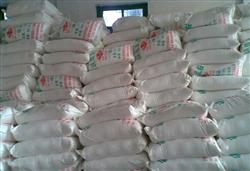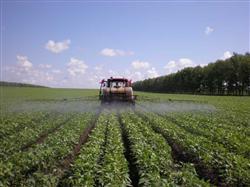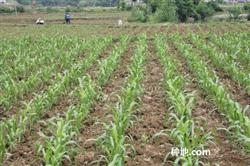How to apply the commonly used chemical fertilizer with good results?

How to apply commonly used chemical fertilizers? Please introduce the following three commonly used fertilizer application methods: 1. urea urea is a high concentration of amide nitrogen fertilizer, currently the highest nitrogen content of solid nitrogen fertilizer in China, is a neutral quick-acting fertilizer, after application into the soil through soil microorganisms after 3~4 days, converted into ammonium carbonate or ammonium bicarbonate can be absorbed and utilized by crops. Therefore, as a base fertilizer to be deep, and than ammonium bicarbonate, ammonium sulfate early application 4 to 5 days. Urea is molecular before transformation and cannot be adsorbed by soil. It should be prevented from losing with water. The ammonia formed after conversion is also easy to volatilize, so urea should also be deeply coated with soil, and it is not suitable to irrigate immediately after application. If irrigation immediately after topdressing is easy to cause urea to lose with water, irrigation should be repeated after 4~6 days. Urea should not be used as seed fertilizer directly, because high concentrations of urea directly contact with seeds, often affecting seed germination, resulting in uneven emergence. The concentration of urea should be strictly controlled when it is used as foliar fertilizer. The concentration of urea for general gramineous crops is 1.5%~2%, fruit trees is about 0.5%, open field vegetables are 0.5%~1.5%, greenhouse vegetables are 0.2%~0.3%, and the concentration of urea can be appropriately increased for crops in full growth period or mature fruit trees. 2. Ammonium bicarbonate is referred to as ammonium bicarbonate, with a nitrogen content of about 17%. It is a variety with the lowest nitrogen content in solid nitrogen fertilizer. Ammonium bicarbonate generally contains 5%~6% water, easy to deliquesce, easy to agglomerate. The temperature is relatively stable below 20 ° C. If the temperature is slightly higher or the moisture in the product exceeds a certain standard, ammonium bicarbonate will decompose into ammonia and carbon dioxide, and the gas will escape into the air, causing nitrogen fertilizer loss. It is physiological neutral quick-acting nitrogen fertilizer, suitable for all kinds of crops and all kinds of soil, both as base fertilizer and topdressing. Ammonium bicarbonate can be applied in furrows or holes as base fertilizer. If it can be combined with deep application of cultivated land, its effect will be better. However, attention should be paid to the application depth of more than 6 cm (sandy soil can be deeper), and immediately after application to cover the soil, only in this way to reduce nitrogen loss. When ammonium bicarbonate is used as topdressing, dry fields can be combined with intertillage, with deep application of 2 inches or less, and immediately covered with soil, but also timely watering. Paddy field should maintain a shallow layer of about 1 inch, but not too shallow, otherwise it is easy to hurt the roots. After application, tilling and harrowing should be carried out in time to promote the fertilizer to be well absorbed by the soil. When ammonium bicarbonate is used as topdressing, remember not to apply it just after rain or before dew is wet. Ammonium bicarbonate, whether used as base fertilizer or topdressing, should not be spread on the soil surface to prevent nitrogen volatilization, resulting in nitrogen loss or fumigation of crops. At the same time, it is necessary to avoid high temperature seasons and high temperature periods, and try to apply them in seasons where the temperature is lower than 20℃. 3. Diammonium phosphate Diammonium phosphate is a kind of high-concentration quick-acting fertilizer, suitable for all kinds of crops and soil, especially for crops that like ammonium and need phosphorus. It should be used as base fertilizer. If it is used as topdressing, it should be applied early and applied 10 cm deep before covering the soil. It should not be too close to the crop to avoid burning the crop. When fertilizing seeds, do not come into direct contact with seeds. Diammonium phosphate should not be applied with water, otherwise most of the nitrogen will remain on the surface, and should not be mixed with alkaline fertilizers such as plant ash and lime to prevent nitrogen volatilization and reduce phosphorus availability. Click for more compound fertilizer application techniques Click for more fertilizer application techniques
- Prev

What should we pay attention to when topdressing crops?
What should we pay attention to when topdressing crops? Please introduce to crops foliar topdressing if you want to have a good effect, you should pay attention to the following points: first, the leaf wetting time should be as long as possible. After spraying outside the root, the longer the wetting time of the leaf, the more nutrients the plant absorbed. Therefore, when fertilizing outside the root, it is generally chosen after 4: 00 p. M.
- Next

When is the best time for topdressing crops?
When is the best time for topdressing crops? Please give guidance to crop topdressing can refer to the following list: 1. Corn is the peak period of nutrition absorption from jointing to trumpet mouth stage. generally, the first fertilizer can be applied before and after jointing, 150 kg ammonium nitrate or 120 kg urea per hectare.
Related
- Fuxing push coffee new agricultural production and marketing class: lack of small-scale processing plants
- Jujube rice field leisure farm deep ploughing Yilan for five years to create a space for organic food and play
- Nongyu Farm-A trial of organic papaya for brave women with advanced technology
- Four points for attention in the prevention and control of diseases and insect pests of edible fungi
- How to add nutrient solution to Edible Fungi
- Is there any good way to control edible fungus mites?
- Open Inoculation Technology of Edible Fungi
- Is there any clever way to use fertilizer for edible fungus in winter?
- What agents are used to kill the pathogens of edible fungi in the mushroom shed?
- Rapid drying of Edible Fungi

